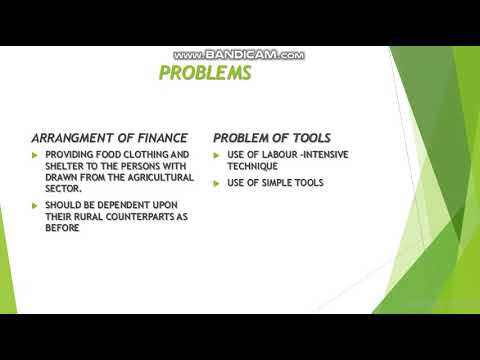

Operating Revenue – This is the revenue generated by a company or organization’s regular business operations. A firm believes that by establishing a cost price less than or equal to the market cost price, it will be able to sell as many quantities of the product as it needed. If this ratio is lower, then it’s considered to be an excellent investment opportunity for investors, as a lower EV / Revenue is perceived as undervalued. If investors invest in such investment options, they might get good benefits out of it. EV to Revenue is extremely difficult to game from an accounting point of view. Though it’s a valid measure, it does not provide us with great insights on what proportion of the revenue covers the cost of revenue.
- The goal of a business owner is to sell as much inventory as possible while keeping as little as possible in stock.
- As per ICAI view, such receipts are liabilities and not a part of gross receipts until services are rendered.
- The total of positive and negative or favorable and unfavorable differences shall be taken as turnover.
You make gross sales incessantly, but you may not consistently earn money from side activities. Above-the-line costs refer to either prices above the gross revenue line or the costs above the operating income line, depending on the kind of firm. Gross revenue is income minus the price of goods bought , which are the direct prices attributable to the manufacturing of the products sold in a company. For a business, income refers to net profit i.e. what remains after expenses and taxes are subtracted from revenue. Revenue is the total amount of money the business receives from its customers for its products and services.
To determine the applicability of Tax Audit as per the Income Tax Act, we should calculate Trading Turnover for such income. The trading turnover calculation should be done only when the income from shares is considered as a business income and not when it is considered as capital gain income. Working capital turnover ratio is the ratio between the net revenue or turnover of a business and its working capital. For instance, if a business’s annual turnover is Rs. 20 lakh and average working capital Rs. 4 lakh, the turnover ratio is 5, i.e. (20,00,000/ 4,00,000).
It is easy to find revenue data for most businesses making it easy to calculate this ratio. It is often used for companies with negative free cash flows or unprofitable companies. Most of the web e-commerce start-ups like Flipkart, Uber, Godaddy, etc., are often valued using EV/Revenue.
Calculation of Trading Turnover from Trading Income
This would keep the records maintained and help in determining if your business is performing efficiently. Part II of Schedule VI of the Act, however, defines the term “turnover” as the aggregate amount for which sales are affected by the company. It may be noted that the “sales effected” would include the sale of goods as well as services rendered by the company. The term “turnover” is a commercial term and it should be construed in accordance with the method of accounting regularly employed by the company. On a profit and loss statement, the terms “sales” and “annual turnover” are interchangeable and relate to the same item.
Is turnover a profit or revenue?
Turnover and profit both represent a company's revenue, but they calculate that income using different inputs. Turnover, also called net sales, is the pure income from sales a company makes, while profit is the total turnover remaining after the organization accounts for all expenses, both variable and fixed.
In a business, many types of assets are required that are used for generating the revenue of the business so that the business can operate. Increasing product quality may also enhance a company’s gross income as high-quality products provide better revenues. By multiplying that number by 12, an investor might use it to determine the yearly turnover for the following year. Calculating yearly turnover is as simple as adding up all of your sales for the year, provided your financial statements are up to current. Income is usually considered a synonym for revenue since each terms discuss with positive money flow. India’s EV market expected to cross 1-cr sales mark per year by 2030, Economic Survey saysIt said the EV market will create five crore direct and indirect jobs.
For example, a enterprise that has inventory turnover of 4 should sell all of its on-hand stock 4 instances per year to be able to generate its annual sales volume. This data is useful for determining how well a company is managing its property and liabilities. When a enterprise purchases capital assets, the Internal Revenue Service considers the purchase a capital expense. In most cases, companies can deduct expenses incurred throughout a tax year from their revenue collected throughout the same tax year, and report the distinction as their enterprise revenue.
Granular Financial Intelligence
The present limit of turnover can now be raised on the recommendations of the Council. In the case of an advertising agency, the number of advertising charges recovered by him from his clients provided these are by way of reimbursement. The value of any benefit or perquisite, whether convertible into money or not, arising from business or the exercise of a profession. There are several specific drawbacks to using turnover data when making decisions. Not Willing to Give Up- Involuntary turnover happens when a company asks an employee to leave.

When the asset turnover ratio is not favourable for the company, it signals the management for increasing its revenue, improving efficiency, improving inventory management, etc. It is crucial for companies to manage their resources adequately to maintain the operational infrastructure. This ensures that production continues without any interruption and losses during unavoidable downturns. In the case of a travelling agent, the amount received from the clients for payment to the airlines, railways, etc. where such amounts are received by way of reimbursement of expenses incurred on behalf of the client. Accordingly, the aggregate of both positive and negative differences is to be considered as the turnover of such transactions for determining the liability to audit vides section 44AB, whether the differences are positive or negative.
In investing, turnover is how much of a portfolio is sold in a given month or year.
Service Guides
Turnover is a concept in accounting that shows how quickly a company runs its business. Usually, turnover is used to determine how quickly a business gets cash from accounts receivable or sells its inventory. The accounts receivable turnover is used to understand the speed at which a company can receive the money for its credit sales. For example, if the monthly credit sales are Rs 20,00,000 and the account receivable balance is Rs 4,00,000, the turnover rate is five.

When the COGS value decreases, there will be an increase in profit, meaning you will have more money to spend for your business operations. Turnover refers to the total amount of revenue your org earns from standard business activities like sales of goods and/or services over a defined period of time. When calculating turnover, you would also include the tax and VAT charges and/or discounts.
The target is to make more money, pay bills faster, and have a high turnover rate. Turnover ratios show how quickly a company turns its inventory and accounts receivable investments into cash. Fundamental analysts and investors look at these numbers to decide if a company is worth investing in. Turnover is an accounting term that measures how rapidly a company runs its activities.
Bajaj Finserv Limited Regd. Office
Revenue is the whole amount of revenue generated by the sale of goods or providers related to the company’s main operations. Profit, sometimes referred to as net profitor the bottom line, is the quantity of income that remains after accounting for all bills, money owed, further revenue streams and operating costs. In a company’s financial assertion , the primary line — additionally called the top line — is revenue. Sometimes this income is damaged out by enterprise activity to supply traders extra transparency into the place the income is derived from. The cost of goods sold is listed next, adopted by other expenses such as selling, common and administrative bills, depreciation, interest paid and taxes. Such a state of affairs doesn’t bode well for a company’s long-time period development.
What is the difference between revenue and turnover?
Revenue is the money companies earn by selling their products and services, while turnover refers to the number of times businesses make assets or burn through them. Thus, revenue affects a company's profitability, while turnover affects its efficiency.
The income generated per unit of product sold is referred to as the average revenue. Profit per unit is calculated by dividing the average cost by the average revenue. A business normally seeks to produce as much production as possible in order to maximize profits. The EV/Revenue revenue vs turnover ratio highlights the Enterprise Value of a company in comparison with its revenue. This is a more comprehensive valuation metric than the popular Price/Sales ratio since the former includes market capitalization, debt and cash equivalents as well in the calculation.
Turnover, also called net sales, is the company’s pure income from sales. On the other hand, profit is what’s left of turnover after the costs have been taken out. Inventory and accounts receivable are two of the most important things a business owns. These accounts require a lot of money, so it’s important to look at how quickly a company gets the money. The distinctions between turnover and income are numerous and complex, yet they are critical for companies to exist. All businesses want to enhance and maximize their income, and comparing year-to-year performance helps assess growth and progress.
These amounts, if collected separately either in advance or otherwise, should not form part of the “gross receipts”. To determine whether a tax audit is applicable or not for F&O trading, calculate the trading turnover i.e. absolute profit. This usually occurs in the case of new businesses that do not earn enough to pay off their overhead costs or income taxes. In such cases, keep track of each type of expenses so that you can find areas to cut down without sacrificing the company’s operations and efficiency.
Turnover
Turnover minus direct costs known as ‘gross revenue’ and is also referred to as revenues. The ensuing gross profit ought to then be used to cover all operating expenses, earlier than any internet profit could be calculated. Further, the words “Sales”, “Turnover” and “Gross receipts” are commercial terms. And as such the method of accounting followed by the assessee is also relevant for the determination of sales, turnover or gross receipts.
The average accounts receivable is just the average of the amounts at the beginning and end of a certain time period, like a month or year. Credit sales divided by the average number of accounts receivable is the formula for accounts receivable turnover, assuming that credit sales are sales that aren’t paid for right away in cash. Revenues must be reported in the income statement, which is available to shareholders. Furthermore, calculating turnover ratios and putting them in financial statements assists shareholders in better understanding them. If not readily available, the number of outstanding shares is multiplied by the existing stock price to determine the market capitalization.
How turnover is calculated?
The formula for calculating turnover on a monthly basis is figured by taking the number of separations during a month divided by the average number of employees on the payroll . Multiply the result by 100 and the resulting figure is the monthly turnover rate.
